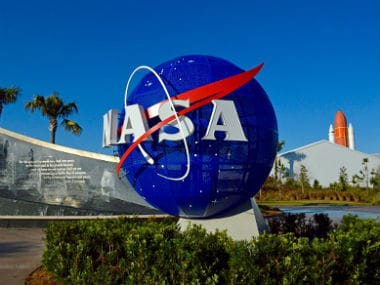NASA,NASA First 3D Model of Snowflake,NASA future space exploration missions , II Strong Signal
NASA released a new video that creates a 3D numerical model of snowflakes melting in the atmosphere. While being inescapably mesmerizing, it also offers a better understanding of how snow melts in Earth’s frozen regions and its global impact.
Scientist Jussi Leinonen of NASA’s Jet Propulsion Laboratory developed the 3D model to help scientists recognize the traits of heavier snow. NASA has begun to focus on snowflake research when studying Earth’s frozen regions, collectively known as the cryosphere, with an interest in how to prevent heavier snow from disrupting infrastructure.
Leinonen’s model snowflake reproduces key features observed in nature. First, meltwater gathers in the concave regions of the snowflake’s surface. These liquid-water regions then merge to form a shell of liquid around an ice core, which eventually becomes a water drop. The half-inch snowflake in the video is made of several individual ice crystals whose limbs become entangled as they collide into each other.
Simpler snowflake models can also reproduce the “melt layer,” or the atmospheric layer at the altitude where falling snow and hail melt. The layer is usually much brighter than the atmospheric layers above and below it. However, Leinonen has created a more detailed model that gives scientists a clearer image of what happens in the melt layer, particularly how the layer is related to the type of melting snow and the radar wavelengths used to observe it.
In 2018, NASA plans to launch two new satellite missions and conduct field research focused on Earth’s melting snow. This deepdive will consist of a thorough investigation of the planet’s ice sheets, glaciers, sea ice, snow cover, and permafrost, leaving no snowflake unturned.
NASA’s interest in the cryosphere isn’t surprising, as melting ice caps become a greater concern to American policymakers. This captivating video of a melting snowflake is just a hint of what the agency plans to do this year to understand this critical phenomenon.
NASA is investing in several next-generation technology concepts that will help the US space agency use them for future space exploration missions.This include meteoroid impact detection, space telescope swarms and small orbital debris mapping technologies, NASA said in a statement.

T
"The concepts can then be evaluated for potential inclusion into our early stage technology portfolio," said Jim Reuter, acting Associate Administrator of NASA's Space Technology Mission Directorate.
NASA,Atlas Space Operations,Telecommunications,Commerce,Nasa,Device,Antenna,Mike Carey,System,#Jim Reuter,#Meteoroid Impact Detection,#Nasa,#NewsTracker,#United States,#US,

No comments
Post a Comment